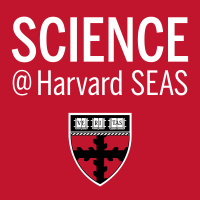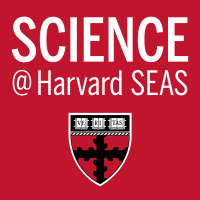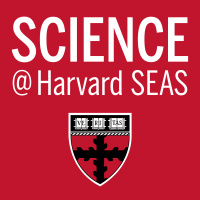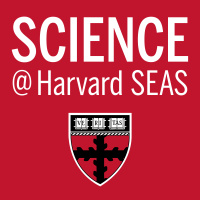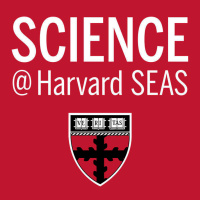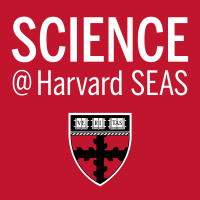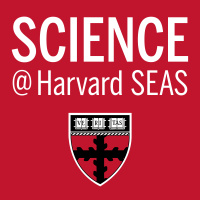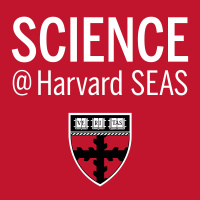Synopsis
Get ready to breakdown the most egregious perpetrator of jargon warfare in all of science: the title of an academic paper. Each episode, we will sit down with a researcher from the Harvard John A. Paulson School of Engineering and Applied Sciences and talk about a recent paper, with the one and only goal of understanding the title.
Episodes
-
Research bits: Engineering Birdsongs
28/08/2017 Duration: 02minResearchers at the Harvard John A. Paulson School of Engineering and Applied Sciences have developed a simple device that mimics complex birdsongs.
-
Slow climate mode reconciles historical and model-based estimates of climate sensitivity
06/07/2017 Duration: 14minSEAS researchers Peter Huybers and Cristian Proistosescu resolved a major conflict in estimates of how much the Earth will warm in response to a doubling of carbon dioxide in the atmosphere. Read the full story here
-
The uncertain future of energy and climate
17/11/2016 Duration: 13minMichael McElroy, Gilbert Butler Professor of Environmental Studies at the Harvard John A. Paulson School of Engineering and Applied Sciences, argues that the United States must move towards a zero-carbon future, replacing its reliance on fossil fuels with a combination of wind, solar, hydroelectric and nuclear power. Such a transition would not only help address climate change and improve air quality but also reduce the cost of electricity and transportation and create millions of jobs in the U.S. We spoke with McElroy about the book, why climate change is a political issue in the U.S. and the impact President-elect Donald Trump may have on the future of energy and climate.
-
Superconductivity vs. Spintronics
18/10/2016 Duration: 11minApplied physicist Hechen Ren joins the podcast to discuss the title of her paper,"Controlled Finite Momentum Pairing and Spatially Varying Order Parameter in Proximitized HgTe Quantum Wells." It gets spooky. Read more about this episode's research on our website.
-
AI and Life in 2030
12/09/2016 Duration: 13minArtificial intelligence has already transformed our lives — from the autonomous cars on the roads to the robotic vacuums and smart thermostats in our homes. Over the next 15 years, AI technologies will continue to make inroads in nearly every aspect of our lives, from education to entertainment, healthcare to security. The question is, are we ready? We spoke with AI pioneer and SEAS professor Barbara Grosz about the legal and ethical implications of the increasing role of AI in our lives. Read the full story here
-
Multilayer Dielectric Elastomers for Fast, Programmable Actuation without Prestretch
20/07/2016 Duration: 08minSoft robots do a lot of things well but they’re not exactly known for their speed. The artificial muscles that move soft robots, called actuators, tend to rely on hydraulics or pneumatics, which are slow to respond and difficult to store. Dielectric elastomers could offer an alternative to pneumatic actuators but they currently require complex and inefficient circuitry to deliver high voltage as well as rigid components to maintain their form— both of which defeat the purpose of a soft robot. Now, researchers at the Harvard John A. Paulson School of Engineering and Applied Sciences (SEAS) have developed a dielectric elastomer with a broad range of motion that requires relatively low voltage and no rigid components. Read the full article here
-
Evidence of a first-order phase transition to metallic hydrogen
30/06/2016 Duration: 07minEarlier this year, in an experiment about five-feet long, Harvard University researchers say they observed evidence of the abrupt transition of hydrogen from liquid insulator to liquid metal. It is one of the first times such a transition has ever been observed in any experiment. Read the full story here.
-
Functional network inference of the suprachiasmatic nucleus
09/06/2016 Duration: 07minResearchers from the Harvard John A. Paulson School of Engineering and Applied Sciences, the University of California Santa Barbara, and Washington University in St. Louis have shown for the first time how neurons in the SCN are connected to each other, shedding light on this vital area of the brain. Understanding this structure — and how it responds to disruption — is important for tackling illnesses like diabetes and posttraumatic stress disorder. The scientists have also found that disruption to these rhythms such as shifts in work schedules or blue light exposure at night can negatively impact overall health. Read more about the research here: https://www.seas.harvard.edu/news/2016/05/mapping-circuit-of-our-internal-clock
-
Metalenses at visible wavelengths: Diffraction-limited focusing and subwavelength resolution imaging
02/06/2016 Duration: 08minCurved lenses, like those in cameras or telescopes, are stacked in order to reduce distortions and resolve a clear image — that's why telephoto lenses are so long and high-powered microscopes so big. But what if you could replace those stacks with a single flat — or planar — lens? Researchers from the Harvard John A. Paulson School of Engineering and Applied Sciences (SEAS) have demonstrated the first planar lens that works with high efficiency within the visible spectrum of light — covering the whole range of colors from red to blue. The lens can resolve nanoscale features separated by distances smaller than the wavelength of light by using an ultra-thin array of tiny waveguides, known as a metasurface, which bends light as it passes through. This lens could replace stacks of lenses in everything from cell phones to cameras, microscopes and telescopes. Learn more about it here
-
Broadband and chiral binary dielectric meta-holograms
23/05/2016 Duration: 07minA very small hologram that can be used across all different wavelengths of light and can be programmed with different images based on the direction of light that works because it's made from a material that doesn't absorb certain light and has other properties not found in nature.



